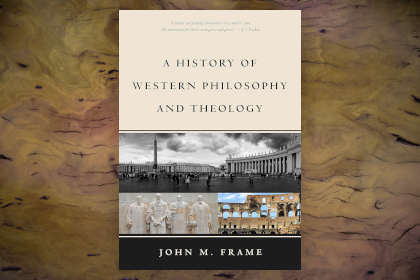Book Review—Promise Unfulfilled | A Summary
Reviewed by Andrew David Naselli.
McCune, Rolland D. Promise Unfulfilled: The Failed Strategy of Modern Evangelicalism. Greenville, S.C.: Ambassador International, 2004. Hardcover, xvii + 398 pp. $24.99.
Editor’s Note: This review was originally posted on Andy’s blog along with a rejoinder from Dr. Rolland McCune. Due to the length of this review, we are splitting it and publishing it here according to its two major headings—(Monday) Part One: A Summary and (Wednesday) Part Two: An Analysis. Purchase: Ambassador-Emerald | CBD | Amazon
Purchase: Ambassador-Emerald | CBD | Amazon
Special Features: Footnotes, Selected Annotated Bibliography, Scriptural Index, and Topical Index
ISBNs: 1932307311 / 9781932307313
LCCN: BR1642 U5 M33
DCN: 230.04624
Subject: Modern Evangelicalism
Promise Unfulfilled is the most penetrating book-length evaluation of the “new evangelicalism” (about 50 years after its genesis) by a self-identified fundamentalist. McCune (b. 1934) is former president and current professor of systematic theology at Detroit Baptist Theological Seminary (Allen, Park, MI). He testifies, “I first heard that there was such a movement called ‘new evangelicalism’ when I entered Grace Theological Seminary in the fall of 1957… . In 1967 I began teaching on the seminary level and annually lectured on the new evangelicalism. This book”—McCune’s first—“is a partial harvest of all my years of research, study, and teaching on the subject” (p. xv).
A Summary: Tracing the Argument
The book’s title reflects McCune’s thesis: Evangelicalism (which is now synonymous with “modern,” “new,” and “neo-evangelicalism”) deliberately distinguished itself from Fundamentalism in the 1940s and 1950s with a fresh promise and strategy, but its promise is unfulfilled, and its strategy has failed. By “new evangelicalism,” McCune means “a strain of conservative, traditional, Protestant, religious thought that coalesced into a movement in the mid-twentieth century, purporting to avoid the fundamentalist right and the neo-orthodox/neo-liberal left” (p. xvi). McCune argues his thesis by discussing historical and theological issues, divided into nine parts (and 25 chapters).
Part 1. “Historical Antecedents” (pp. 1–26) recounts the rise of liberal or modernist theology and how that resulted in the fundamentalist-modernist controversy in America. Fundamentalism’s “esprit is principally its militant separatism. Fundamentalism is a movement, not an attitude of belligerence, ugliness, or a negative mentality as often depicted” (p. 16). The fundamentalist movement’s “essence” consists of (1) “core biblical truths, principally those concerning Christ and the Scriptures,” (2) “ecclesiastical separation,” and (3) “militancy” (p. 16).
Part 2. “The Formation of the New Evangelicalism” (pp. 27–63) begins with “four crucial issues”:
- (1) Unity/separation: The National Association of Evangelicals began in 1942 and declined to merge with Carl McIntire’s American Council of Christian Churches.
- (2) Social concern: Carl Henry’s The Uneasy Conscience of Modern Fundamentalism (1947) decried “the lack of social concern in the fundamentalist movement of which he considered himself a part” (p. 34).
- (3) Scholarship/intellectualism: Fuller Theological Seminary began in 1947, partly as a reaction to fundamentalists who “simply were not up to par intellectually” (p. 38).
- (4) Evangelism: Billy Graham’s evangelistic crusades from 1949 to 1957 came to a head at the 1957 New York Crusade, which “finally made the two camps irreconcilable” (p. 45) because of Graham’s new and compromising policies on both sponsorship and convert referrals. “Graham brought an end to evangelical unity” (p. 55).
Eight other factors contributed to Evangelicalism’s formation:
- (1) Vernon Grounds’ “The Nature of Evangelicalism” in Eternity (Feb. 1956);
- (2) Christianity Today, created in 1956;
- (3) “Is Evangelical Theology Changing?”, a symposium in Christian Life (March 1956);
- (4) Harold Ockenga’s news release announcing Evangelicalism’s change of strategy from separation to infiltration (Dec. 8, 1957);
- (5) Robert O. Ferm’s 100-page Cooperative Evangelism: Is Billy Graham Right or Wrong? (1958);
- (6) Edward Carnell’s The Case for Orthodox Theology (1959);
- (7) Donald Grey Barnhouse’s support of Evangelicalism from 1953 until his death in 1960; and
- (8) articles by evangelicals published in the liberal Christian Century.
Part 3. “Ecumenism” (pp. 65–123) defines the term as the effort to implement a unity that ignores or greatly minimizes “doctrine, truth, and group distinctives” for “a united front,” particularly “the collaboration between evangelicals and non-evangelicals in promoting various religious and spiritual projects” (p. 65). This ecumenism errantly extends to evangelism, church councils, accolades, journalism, charismaticism, and Roman Catholicism.
Part 4. “Ecclesiastical Separation” (pp. 125–54) explains arguments for non-separatism (pragmatism, infiltration, apostasy, and the impossibility of a pure church), refutes them, and explains four “categories of separation”:
- (1) Christians must separate from heresy, which denies what is essential to Christianity (Acts 20:28–30; Rom. 16:17–18; 2 Cor. 11:4; Gal. 1:8–9; Phil. 1:15–18; 1 Tim. 6:3–5; Titus 1:3; 2 John 9–11; Rev. 2:14–15).
- (2) Christians must avoid unequal alliances by separating from non-Christians in spheres such as worship, marriage, and ministry (2 Cor. 6:14–7:1).
- (3) Christians must separate from organized apostasy, which includes belonging to apostate denominations or associations, giving them money, speaking for them, and sponsoring them (Rev. 18:4; cf. Isa. 52:11; Jer. 50:8; 51:6, 9, 45; 2 Cor. 6:17).
- (4) Christians must separate from disobedient Christians (2 Thess. 3:6–15; cf. Matt. 18:17; 1 Tim. 1:20; 5:22). This fourth category is unique to Fundamentalism and is known as “secondary separation,” which “is the refusal to cooperate with erring and disobedient Christians who do not adhere to primary separation and other vital doctrines” (p. 146). “Ecclesiastical separation does not really admit of ‘degrees.’ [n. 26: “Bob Jones, “Scriptural Separation: ‘First and Second Degree.’”] Separation is directed to the other person because of his deviations from Scripture in whatever ways he may express them. If the erring brother runs with the wrong crowd, separation at this point is from him as well as from the unbiblical company he is keeping. The reason for separating may well involve someone’s unscriptural involvements, but in reality this is no more ‘secondary’ than a ‘primary’ separation from apostasy” (p. 147).
Separation “is not one-size-fits-all” but includes three levels that “carry their own doctrinal and practical requirements”: (1) personal, (2) local church, and (3) organizational (p. 154).
Part 5. “The Bible and Authority” (pp. 155–94) chronicles the controversy over biblical revelation, inspiration, and inerrancy. This issue arose largely because of neo-orthodoxy’s influence.
Part 6. “Apologetics” (pp. 195–228) argues that “the new evangelical view” of apologetic methodology is “semi-rationalism or semi-biblicism” (p. 198–99) and concludes that after 50 years of Evangelicalism, its leaders “have abandoned the sense of an absolute and infallible religious authority, and today the evangelical movement is groping to find some kind of a basis or an authority to meet a rootless, non-absolutist, relativist culture on the culture’s own terms with the claims of the living and true God” (p. 195).
Part 7. “Social Involvement” (pp. 229–74) traces the history of evangelical social activism and contrasts it with “the biblical idea of social action,” which (consistent with Alva J. McClain’s form of dispensationalism) maintains “there is not presently a messianic kingdom of God in existence; there is no ‘kingdom now.’ The church is not the kingdom and cannot participate in any social proposals attributable to the kingdom, and for that reason there can be no tenable sociopolitical kingdom advancement by the church in the present age” (p. 264).
Part 8. “Doctrinal Storms” (pp. 275–308) highlights three unfortunate controversies in Evangelicalism: (1) the status of the unevangelized, (2) the destiny of the finally impenitent, and (3) the open view of God.
These internal controversies have not caused groups to break away from the evangelical movement because division, schism, and separation are the scarlet sins in new evangelical thought. What happens is that the avant garde ideas cause internal controversy and calls then go out for more prayer, more open-mindedness, more finessing, and more effort to find some kind of tolerable middle ground. These summons may be accompanied by not-so-veiled charges of causing disorder in the body of Christ, but when the turmoil quiets down, the new element is simply absorbed into the general new evangelical movement, and life goes on in the name of Christian brotherhood. Meanwhile as the movement has become doctrinally diluted and less and less biblical there is internal debate about what an evangelical really is. In the end, no one seems to be excluded from being considered an evangelical (p. 275).
Part 9. The “Conclusion” (pp. 309–60) evaluates Evangelicalism:
The new evangelicalism has been slowly but decidedly moving toward neo-orthodoxy and beyond… .
When ultimate religious authority cannot be successfully identified, the gospel has no sure parameters. When the gospel cannot be precisely defined, what it means to be a Christian cannot be agreed upon. If the marks of a genuine Christian cannot be construed, then the question of what the Christian church is becomes moot. In liberal Protestantism the church became everyone and, in reality, was no one and thus nondescript. If everyone is a Christian, then no one is a Christian in this amorphous blob of religion. The new evangelicalism appears to be well on its way toward becoming such a conglomerate bereft of true biblical distinctives.
A movement that wants to be called evangelical and yet has to debate itself over what the genius of Christianity actually is, is putting the finishing touches on its own coffin. It seems certain that the new evangelicalism is incapable of self-correction (pp. 309, 319–20).
Following this evaluation is a critical review of Robert Webber’s The Younger Evangelicals, a timeline of major events in Evangelicalism from 1942 to 2003, and an informative annotated bibliography.
 Andy Naselli is currently working on a Ph.D. in Theological Studies with a concentration in New Testament Exegesis and Theology at Trinity Evangelical Divinity School, where he serves as teaching assisting to Dr. Robert Yarbrough, research assistant to Dr. D. A. Carson, and part-time Greek faculty. He earned a Ph.D. in theology from Bob Jones University (2006), an M.A. in Bible from Bob Jones University (2003), and a B.A. in Bible from Baptist College of Ministry (2002). He and his wife Jenni live on campus at Trinity in Deerfield, Illinois. Andy Naselli is currently working on a Ph.D. in Theological Studies with a concentration in New Testament Exegesis and Theology at Trinity Evangelical Divinity School, where he serves as teaching assisting to Dr. Robert Yarbrough, research assistant to Dr. D. A. Carson, and part-time Greek faculty. He earned a Ph.D. in theology from Bob Jones University (2006), an M.A. in Bible from Bob Jones University (2003), and a B.A. in Bible from Baptist College of Ministry (2002). He and his wife Jenni live on campus at Trinity in Deerfield, Illinois. |
Click here to learn more about SharperIron book reviews.
- 1 view

Discussion